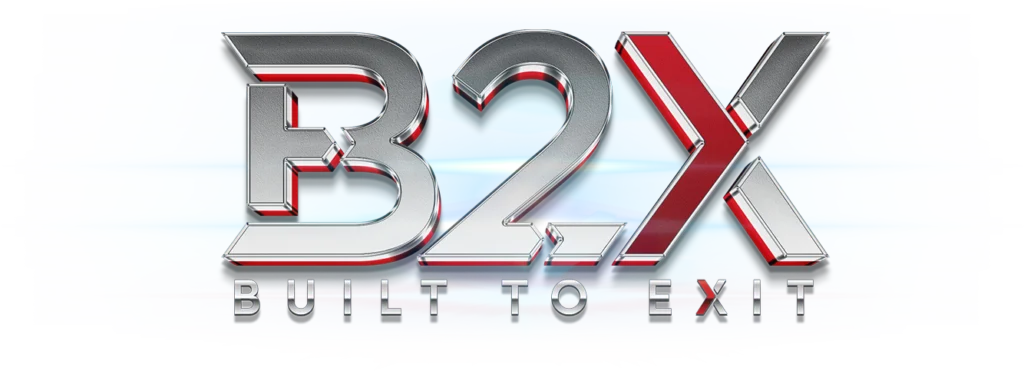You’ve just driven off the lot in the sports car of your dreams.
The sleek lines, the roar of the engine, the thrill of the open road – it’s everything you’ve ever wanted.
But what makes your sports car truly special?
Is it just about how fast it can go from 0 to 60? Sure, that’s impressive, but it’s not the whole story. A truly valuable sports car is about so much more:
- It’s got a solid foundation: The chassis must be sturdy and well-engineered to handle the power and speed.
- The engine is a masterpiece: It’s not just powerful, but reliable and efficient, delivering consistent performance under any conditions.
- Every component is precision-crafted: From the transmission to the brakes, every part works seamlessly together.
- It’s a head-turner: Its design is unique and stylish, setting it apart from the competition.
- It has a proven track record: Its performance and reliability have been tested and proven over time.
When you start to view your business as a top-of-the-line sports car, it’s not just about how much revenue you’re generating right now (that’s your 0 to 60 speed). It’s about building a business that’s valuable, reliable, and attractive to potential buyers, even if you plan to own it forever.
Just like a car enthusiast meticulously maintains their vehicle, you need to keep your business in peak condition.
Ensure that every aspect of your business is up-to-date, efficient, and aligned with industry standards.
And here’s the thing: Even if you never plan to sell your sports car, treating it like a valuable asset means you’ll enjoy the ride a whole lot more. It’ll perform better, require less maintenance, and give you a sense of pride every time you drive it.
Now that we’ve got our sports car analogy revved up, let’s dive deeper into what makes a business a high-performance machine.
Strong Customer Relationships: Your High-Octane Fuel
First up, let’s talk about what keeps your business engine running — your customers. In our sports car analogy, your customer base is the high-octane fuel that powers your engine. The quality of your customers is the premium fuel that keeps it running smoothly.
- Customer Lifetime Value: Think of your customers as your car’s fuel tank. One-time buyers are like filling up just enough to get you to the next gas station, while repeat customers are like a full tank that keeps you going for miles. The more miles you can get out of a tank, the more valuable it is.
- Churn Rate: How many customers are you losing? A low churn rate is like having a well-sealed fuel system without leaks, allowing your engine to run smoothly and efficiently for longer periods. Regular maintenance checks on your fuel system (monitoring customer satisfaction and addressing issues promptly) can help you identify and fix these leaks early, keeping your business engine running clean and powerful.
- Referrals: Think of these as your fuel additives. When existing customers bring in new ones, you’re supercharging your growth without wearing out your marketing engine. Implementing a strong referral program can create a virtuous cycle of growth, where each satisfied customer becomes a potential source of new business, amplifying your marketing efforts and accelerating your expansion.
Financial Clarity and Accuracy: Your Dashboard
Now, let’s talk about your dashboard – your financial reports. Just like a well-designed dashboard gives you all the vital info at a glance, your financial records should provide a clear, accurate picture of your business’s performance.
- Accrual Accounting: Accrual Accounting is like having a fuel gauge for your business finances, rather than just checking your tank when you fill up. This method provides a more accurate and comprehensive picture of your financial position at any given moment. Unlike cash-based accounting, which only records transactions when money changes hands, accrual accounting recognizes revenue when it’s earned and expenses when they’re incurred, regardless of when cash actually flows in or out. This approach aligns your financial statements more closely with the actual economic activity of your business, giving you a clearer view of your profitability and overall financial health. It’s particularly useful for businesses with complex operations or those dealing with credit transactions, as it offers a more realistic representation of the company’s financial situation over time.
- 13-Week Cash Flow Forecasts: Forecasts function like a financial GPS for your business, helping you navigate the road ahead and avoid potential financial potholes. This rolling forecast projects your cash position for the upcoming 13 weeks, providing a detailed view of expected cash inflows and outflows in the near future. By maintaining and regularly updating this forecast, businesses can anticipate cash shortfalls or surpluses, make informed decisions about the timing of payments and collections, and better manage their working capital. This tool is especially valuable during times of economic uncertainty or for businesses with seasonal fluctuations, as it allows for proactive financial management and helps ensure that there’s always enough cash on hand to meet obligations and capitalize on opportunities.
- GAAP Compliance: This is like having your dashboard laid out according to universal standards. Any potential buyer can hop in and immediately understand what’s going on under the hood. The Generally Accepted Accounting Principles (GAAP) provide a standardized framework for financial reporting, ensuring that your financial statements are prepared in a consistent and transparent manner. This standardization is crucial because it allows any potential buyer, investor, or stakeholder to quickly understand your financial position and performance. GAAP compliance increases the credibility and comparability of your financial information, making it easier for external parties to assess your business’s financial health. It’s often a requirement for public companies and those seeking outside investment and can significantly enhance your business’s attractiveness to potential buyers or investors. By adhering to GAAP, you’re essentially speaking a common financial language that is widely understood and respected in the business world.
Your Car Engine
Last but not least, let’s talk about your systems and processes — the inner workings of your engine. This is what allows your business to run smoothly and consistently, even when you’re not around.
- Standard Operating Procedures (SOPs): These are like the detailed diagrams in your car’s manual. Anyone should be able to pick them up and understand how each part of your business operates. Documented procedures serve as a reference point for employees, ensuring consistency and efficiency in operations. SOPs cover everything from daily routines to complex procedures, acting as a knowledge base that preserves institutional memory. By having well-defined SOPs, you create a system where any team member can understand and execute tasks correctly, reducing errors and improving overall productivity.
- Repeatable Outcomes: This is about precision engineering. Your business should produce consistent results, time after time, just like a finely-tuned engine. Repeatable Outcomes refer to the ability of your business to consistently deliver high-quality results, regardless of who’s performing the task or when it’s being done. This consistency is crucial for building trust with customers and maintaining a strong reputation in the market. Achieving repeatable outcomes requires a combination of well-designed processes, quality control measures, and a culture of excellence.
A high-performance sports car isn’t just about the engineering and components – it’s also about the skilled team that maintains and improves it. In the same way, a valuable business relies heavily on a trusted, competent team. This team is like your pit crew and mechanics, ensuring that every aspect of your business runs smoothly and efficiently.
Your business goals are your roadmap, guiding you through the twists and turns of entrepreneurship.
Keep your eyes on the horizon, but don’t forget to enjoy the scenery along the way. Each challenge overcome, and each milestone achieved signifies your growing expertise and the increasing value of your business.
As you navigate this path, remain flexible and open to new opportunities. Sometimes, the most rewarding experiences come from unexpected detours. Your well-tuned business machine should be agile enough to handle whatever the road throws at you, whether it’s a sudden market shift or a new technological advancement.
Ultimately, whether you choose to keep driving your high-performance business indefinitely or eventually hand over the keys to a new owner when your business is Built To Exit, you’ll know you’ve built something truly remarkable. A business that not only runs smoothly and efficiently but one that’s left its mark on the industry landscape.
Now that’s a ride worth taking.

